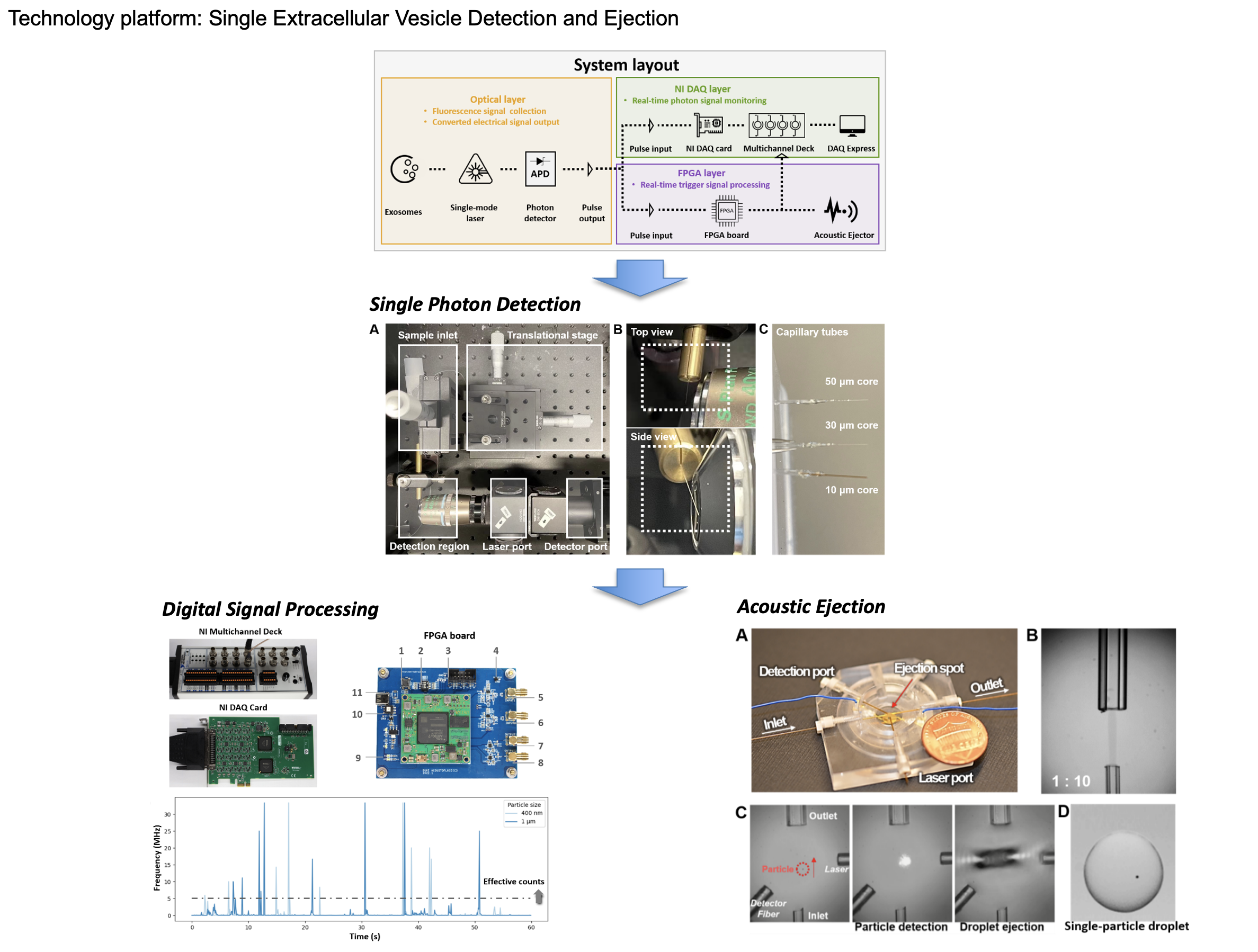1-UG3-TR002978-01 • University of California Los Angeles
1-UG3-TR002978-01 • University of California Los Angeles
Principal Investigator:

This UG3/UH3 application is responsive to the NIH Common Fund initiative RFA-RM-18-028 “Advancing Extracellular RNA (exRNA) Communication Research: Towards Single Extracellular Vesicle (EV) Sorting, Isolation, and Analysis of Cargo”. This proposal is built on a foundation of a 5-year NIH Common Fund “Extracellular RNA Communication Consortium Stage 1 (ERCC1)” project to develop salivary exRNA biomarkers for gastric cancer detection where a panel of highly discriminatory salivary extracellular RNA (exRNAs) have been developed (discovered and definitively validated) for gastric cancer, scientifically and translationally credentialed salivary exRNA for systemic disease detection. This ERCC Stage 2 project is to develop an innovative technology, AcoustoFluidic Separation (AFS) coupling with Surface Enhanced Raman Spectroscopy (SERS), towards single EV isolation and to characterize exRNA cargos associated with specific EV subpopulations based on the cells of origin, intended target cells and biolfuids. Eight Specific Aims with twelve quantitative milestones in two phases (UG3, UH3) are in place to test the central hypothesis that exosomes are the EV from gastric cancer tissue/cells of origin harboring the nine validated discriminatory salivary exRNA biomarkers, transported through vasculature, homing into salivary glands (target organ) and into saliva. Four Specific Aims in the UG3 Phase are to develop the AFS technology as a standard operating procedure (SOP) for rigor and reproducibility (Aim 1); SERS development for EV fingerprinting and co-localization of exRNA targets to singe EV (Aim 2); two independent “Rigor and Reproducibility Labs (R&R Labs)” to evaluate the AFS SOP (Aim 3) and approaches to share strategies, protocols, tools with broader scientific community with DMRR (Aim 4). In the UH3 Phase four Specific Aims are in place to optimize, refine and scale up the AFS SOP (Aim 5); perform sorting, tracking of validated salivary exRNA biomarkers for gastric cancer detection from cells of origin, to blood, to salivary glands and to saliva (Aim 6); “R&R Labs” to optimize AFS to other human biofluids (Aim 7) and approaches to share strategies, protocols, tools with broader scientific community with DMRR (Aim 8). Completing these Aims and goals based on the outcome of the ERCC1 project is logical and highly impactful as the outcomes of the ERCC2 project will deliver a set of novel technologies, AFS in tandem with SERC, for rapid, high yield (6X over current technologies) and single EV level isolation for salivary biomarker development for systemic disease detection. These will constitute the foundation of “exRNA Saliva Liquid Biopsy (exRNA- SLB)” where the diagnostic and therapeutic functionality of exRNAs can be fully realized when the range of EV subpopulations from a given cell source can be characterized and analyzed for molecular cargos.
Related Projects